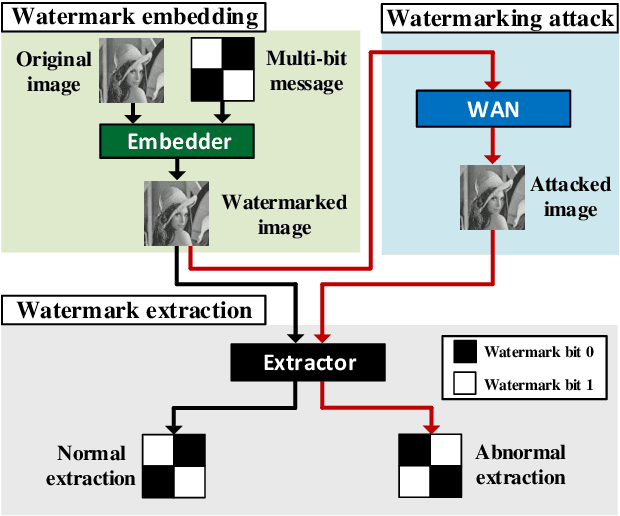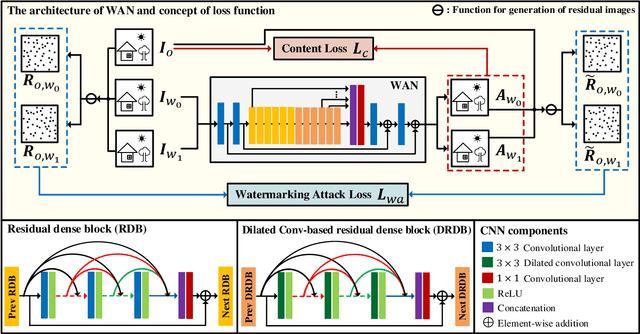Seung-Min Mun
WAN: Watermarking Attack Network
Aug 14, 2020



Abstract:Multi-bit watermarking (MW) has been developed to improve robustness against signal processing operations and geometric distortions. To this end, several benchmark tools that simulate possible attacks on images to test robustness are available. However, limitations in these general attacks exist since they cannot exploit specific characteristics of the targeted MW. In addition, these attacks are usually devised without consideration for visual quality, which rarely occurs in the real world. To address these limitations, we propose a watermarking attack network (WAN), a fully trainable watermarking benchmark tool, that utilizes the weak points of the target MW and removes inserted watermark and inserts inverted bit information, thereby considerably reducing watermark extractability. To hinder the extraction of hidden information while ensuring high visual quality, we utilize a residual dense blocks-based architecture specialized in local and global feature learning. A novel watermarking attack loss is introduced to break the MW systems. We empirically demonstrate that the WAN can successfully fool a variety of MW systems.
 Add to Chrome
Add to Chrome Add to Firefox
Add to Firefox Add to Edge
Add to Edge